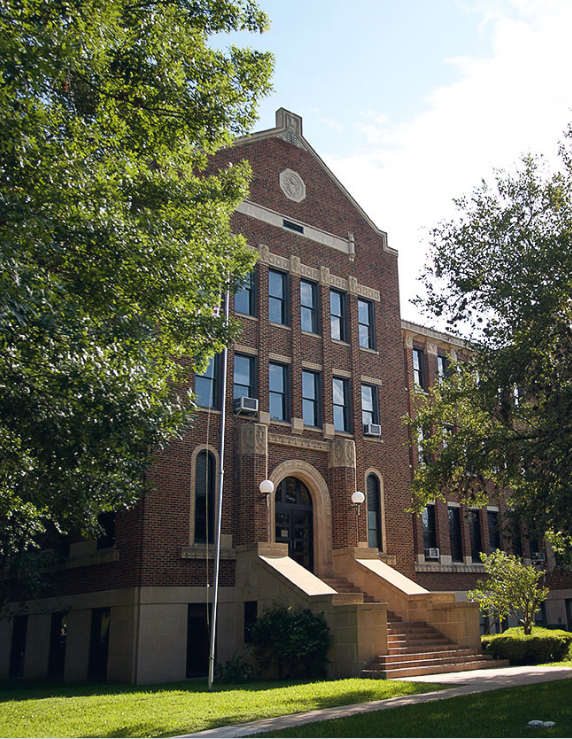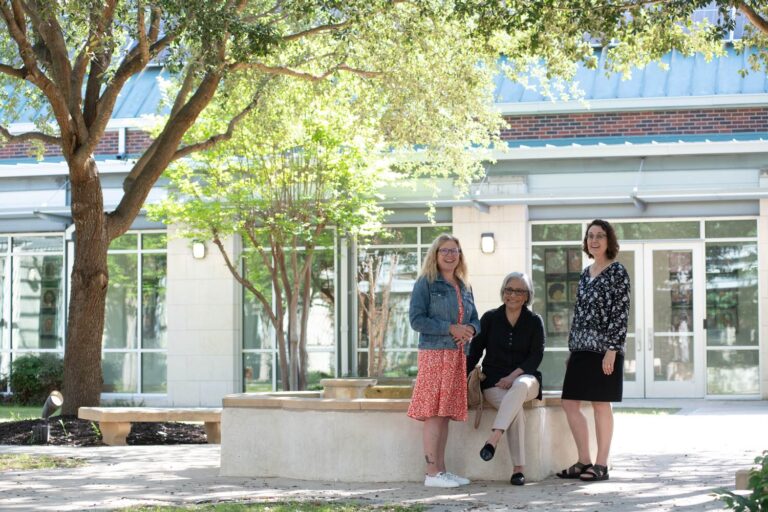Joseph G. Diermeier
Introduction
“We are living in one of the most significant periods of ministerial transformation in the history of the church.”1 These words echo the sentiments of the U.S. bishops in their 2005 statement “Co-Workers in the Vineyard of the Lord.”2 Building upon the conciliar document, Lumen Gentium 33, the role of lay ecclesial ministers is vital to the current ministerial transformation which is reshaping the contours of ecclesial life in many parts of the world. The aforementioned document further states that the laity share in the mission of salvation through Baptism and Confirmation. Canon 96 of the current Code of Canon Law reiterates this point and reminds us that by Baptism one is incorporated into the Church of Christ and possesses rights and obligations. Canons 225-231 and canon 759 make explicit some of the rights and obligations which flow from the sacrament of Baptism. Some examples are: the right and obligation to make known the message of salvation either as individuals or joined in associations, the right and obligation to imbue and perfect the order of temporal affairs, the right and obligation for parents to educate their children, the right for laity who are qualified to be admitted to certain ecclesiastical offices and functions, the right to acquire higher degrees in the sacred sciences and to teach them, and the right to exercise certain liturgical ministries. Therefore, as indicated in the conciliar documents as well as the canons of the Church, lay involvement in the apostolate is both a right and a duty.
Ecclesial life and ministry is a primary focus for the Oblate School of Theology. Its Statement of Purpose indicates that “through degree and certificate programs the School strives to educate and form candidates for priestly ministry as well as lay ministries.” Attention given to the Lay Ministry Institute (LMI) provides “lay leadership skills that help prepare students for collaborative ministry in the parish or other ministry settings.” Manifold opportunities have surfaced for the laity to contribute to the Church’s ongoing sanctification through mission and ministry. While the aforementioned canons (225-231 and 759) pertain to the broader spectrum of church ministry and the involvement of laity in ministry, canon 517 §2 refers more specifically to church office and “provides a canonical basis for the growing phenomenon worldwide and even in the United States of placing nonordained ministers in charge of parishes.”3 Nevertheless, as one respected canonist comments, “The 1983 code is at best ambivalent about laity being involved in some forms of pastoral activity.”4 The ambivalence is demonstrated in canon 129 which indicates that clerics are habiles (qualified) for the power of governance and that laity can cooperate, but from this statement one should not jump to the conclusion that only clerics are habiles. Many canons are the result of a compromise, and quite often a canon should not be read in isolation from other canons. With regard to this canon, for example, it should be read in light of canon 228 which indicates that the lay Christian who is found suitable is qualified to exercise certain ecclesiastical offices. A fair assessment, therefore, is to state that both Vatican II and the current ecclesiastical law favor active lay involvement in the mission and ministry of the Church. Despite any perception of the code’s ambivalence, lay ecclesial ministry is “in some ways running far ahead of any theological or canonical foundations.”5
Three aspects with regard to lay ecclesial ministry will be presented in this article; each will relate conciliar (e.g., Ad Gentes 23, 27; Apostolicam Actuositatem 10) or canonical foundations to the 2005 document, “Co-Workers in the Vineyard of the Lord.” They are as follows: (1) the vineyard as the place for ministry, (2) the workers given for service to the community, and (3) the emphasis on “co-“ in the building of God’s Kingdom. Foundational to all three considerations is the understanding that lay ecclesial ministry flows from the notion of a vocation as derivative from one’s baptismal call. Relating the emergence of the lay ecclesial minister in his or her vocation to the historical burgeoning of religious communities of the past, Dr. Hahnenberg, associate professor of theology at Xavier University in Cincinnati, states:
The rise of lay ecclesial ministry brings something new. Simply put: Ministry has not been done in this way, on this scale, before. “Co-Workers” affirms that lay ecclesial ministry is in continuity with the church’s theological tradition and doctrinal history. And there is much truth in this claim. But lay ecclesial ministry also brings a challenge to the way things have “always” been done, a challenge to the ministerial order of the church just as radical as that brought by the mendicant friars or the active sisters.6
Acknowledged by the bishops’ 2005 document, the new and radical ministerial order which lay ecclesial ministry generates continues to be woven into the fabric of the Church’s mission and occurs through the working of the Holy Spirit.
Co-Workers with the emphasis on the “vineyard”
In light of canon 517 §2, the parish is perhaps the most common vineyard where the fruits of lay ecclesial ministry can ripen.7 According to canon 515, a parish is a community of the Christian faithful stably constituted in a particular church, whose pastoral care is entrusted to a pastor and under the authority of a diocesan bishop. Although the parish may be thought of as the most common locus for ecclesial ministry, one cannot forget the home (i.e., the domestic church) environment where Christian spousal interaction and parental duties occur. Additionally, the canonical tradition includes mission territories, schools, television and radio, as well as the diocesan curia as other possible vineyards for lay ecclesial ministry. The ever-expanding vineyard includes health care facilities, homeless shelters and other forms of parish outreach, as well as places where youth gather, etc. The vineyard, while including those places and persons where pastoral care is able to be offered, requires some boundary which ensures the proper authorization of the lay ecclesial minister (as well as the ordained minister) who acts in the name of the Church.8
Co-Workers with the emphasis on “workers”
Georgia Keightley writes the following with regard to the laity:
The ecclesiology of Vatican II marks an official shift away from identifying the church’s essence with its hierarchical element to its relocation in the collective socio-historical experience of the community (LG 7). As a result, laicity is no longer to be thought of as constituting a separate rank or class; indeed, from the council’s standpoint, to be laity is to be church.9
The present code, following conciliar impetus, allows for the laity to give service to the church community in a variety of ways. For example, some offices within the particular church which are open to the laity include serving as a member of the diocesan finance council or the finance officer for either a diocese or religious institute, the administering of a parish or being in charge of ecclesiastical goods, serving as diocesan chancellor or in a tribunal position such as judge, auditor, assessor, promoter of justice or defender of the bond.
Other canons address the possibility of the laity’s exercising the teaching and sanctifying roles within the Church’s mission. For example, in Book III on the teaching function of the Church, there are canons that refer to consecrated religious who witness to the gospel and assist in its proclamation, as well as lay members of the Christian faithful who cooperate in this endeavor.10 The possibility of lay preaching is indicated if necessity requires it or it seems advantageous in particular cases.
Book IV of the code treats the sanctifying function of the Church and how the lay faithful cooperate with the hierarchy in the sanctifying responsibility. For example, canon 861 §2 of the 1983 code indicates the possibility of a catechist or others designated by a local ordinary to be the minister of Baptism when a bishop, priest, or deacon is absent. The canon further states that in a case of necessity any person with the right intention confers baptism licitly.11 The code also mentions the possibility of lay ministers assisting with the sacrament of Matrimony. Lay ministers can be selected to give instruction to those preparing to be married (canon 1112 §2) and where there is a lack of priests or deacons, the diocesan bishop, after following certain procedures, can delegate lay persons to assist at marriages (canon 1112 §1). The current law provides for both lay women and men to assist at marriages when priests or deacons are lacking. In other words, the Latin Church does not per se require ordination in order to assist at the sacrament of matrimony. In the broader context of ministry, certain canons discuss the role of parents and sponsors for baptism and confirmation. Other canons pertain to the Eucharist and include the work of the laity; marriage is likewise seen as a beautiful expression of where the lay faithful work in cooperation with God in the procreation and education of children.
In a 1988 apostolic exhortation, John Paul II stated the following: “When necessity and expediency in the Church require it, the pastors, according to established norms from universal law, can entrust to the lay faithful certain offices and roles that are connected to their pastoral ministry but do not require the character of orders.”12 Nevertheless, in 1997, six Roman congregations and two councils issued an instruction expressing concern about the distinct roles and activities proper to the priesthood of the ordained and the priesthood of all who are baptized.13 The instruction, according to Rinere, “created quite a stir since it was perceived as being hostile and repressive toward lay ministers.”14 These two documents indicate that since the time of the 1983 code’s promulgation, slow and not always steady navigation has taken place through much of the uncharted waters with regard to lay ecclesial ministry.
Co-Workers with the emphasis on “co-”
Contemporary Catholic theology, in light of Vatican II, affirms the variety of ministries to be exercised by various members of the believing community. The practice of ministries continues to unfold in the life of the Church and in its historical complexities. It is undeniable that Vatican II opened the door to lay involvement in pastoral care, significantly so in the conciliar themes of ministry that are derived primarily from Lumen Gentium and Apostolicam Actuositatem and which suggest that ministry is founded upon Baptism and charism, that the fundamental equality of all the Christian faithful lends itself to effective ministry, and that the varying levels of relationship between the hierarchy and the laity contribute to the salvific mission of the Church.
With regard to the laity as co-workers (emphasis on co-), the 1983 code minimally addresses the requirements for lay formation (cc. 228-231) yet painstakingly delineates the theological foundations for the formation of clerics (cc. 232-264). This is understandable since the notion of lay ecclesial ministry had only been in its inchoate stages at the time of the current code’s promulgation.15 Corrective steps have been taken, however; the 2005 bishops’ document on lay ecclesial ministry has been an attempt for the Church to address more adequately the current pastoral praxis. Secondly, the fact that serious consideration is given to the discernment and suitability of laity and clerics for the ministry of the Church is commendable. Certainly, in light of recent developments pertaining to the clerical sexual abuse scandal, even greater attention has been and will continue to be given to the suitability of clerics for the ministry of the Church. The same scrutiny will undoubtedly be applied to lay ecclesial ministers since both cleric and lay ministers require proper authorization in order to exercise the ministry in the name of the Church.
As stated previously, canon 96 states that by Baptism one is incorporated into the Church of Christ and is constituted a person in it with the duties and rights which are proper to Christians. Canon 129 states that those who have received sacred orders are qualified for the power of governance and that lay members can cooperate in the exercise of this same power. The theological and canonical debates over this issue focus primarily upon the capacity of the laity to hold office and exercise the power of governance. Two opposing positions can be identified and understood in light of the 1917 code which stated that only clerics could obtain the power of governance. Clerics, according to the 1917 code, were those who had received tonsure (i.e., a preliminary step toward sacred orders). In other words, according to the previous code, one could exercise the power of governance without sacred ordination. The two positions currently debated revolve around one stating that Vatican II had no intention to break with history and, therefore, laity can exercise the power of governance while the other position states that the only source of sacred power (i.e., the power of orders and of governance) is ordination. This position maintains that laity cannot exercise the power of governance and, therefore, minimizes the cooperation of the laity as expressed in canon 129 §2 or the emphasis on laity as “co-workers” as stated in canon 545 §1. John Huels, an eminent canonist who speaks for the opposing point of view, holds that the canons do provide for the laity to exercise the power of governance, and he also points out the possibility that faculties may be delegated to the laity who co-operate with the Church’s mission.16
Concluding observations
A set of principles were drafted for both the Latin and Eastern codes, drawing from the Second Vatican Council’s ecclesiological consciousness. Although the Latin principles articulate the fundamental equality of all believers, nothing is mentioned with regard to the laity as participating in the ministry of the Church. The Eastern principles, by way of contrast, highlight the participation of the laity in the triple responsibilities of Christ and the Church. Many canonists would say that the Eastern code, promulgated in 1990, reflects ongoing currents of thought which were not available at the time when the Latin code was written. Therefore, the contrast between the two codes does not signify opposition but rather, the distinctions between the two codes reflect the Church’s developing theology of lay ministry following Vatican II. Monsignor Thomas J. Green of the Catholic University of America writes the following with regard to principle 8 of the Eastern code revision process:
Lumen Gentium, n. 33, recognizes that “the laity can be called in various ways to a more direct form of cooperation in the apostolate of the hierarchy, as was the case with those men and women who assisted Paul in the work of evangelization” and “can be deputed by the hierarchy to exercise, for a spiritual purpose, quaedam munera ecclesiastica.” It does not seem that such munera can be reduced to merely secondary functions, either as regards liturgical actions, the administrative activity of the Church, or even the preaching of the Gospel message. The future Code should leave ample powers to the bishops enabling them to admit lay-persons to the exercise of such ecclesiastical offices as are suited to them and correspond to their technical qualifications, combined with their exemplary lives, their human virtues and their dedication to the Church’s mission.17
Lay ecclesial ministry must be understood as a vocation within the Church in order for it to be properly recognized and appreciated. A recent U.S. study indicates that more than half of those involved in lay ecclesial ministry believe that “a call by God was the factor that most influenced their decision;”18 an even higher percentage of those in lay ecclesial ministry (73.1 percent) believe their service to the Church will be for the remainder of their lifetime.19 “Viewing lay ministry as a function or profession is based on an incorrect assumption;”20 it is, rather, a collaboration in the work of teaching, governing and sanctifying, and “a call that finds its origin in the call of God and its confirmation in the appointment to a specific ministry within the Church.”21
Rev. Msgr. Joseph G. Diermeier, Vicar General of the Diocese of La Crosse, WI, and pastor of Nativity of the Blessed Virgin Mary Parish in Marathon, earned his Doctor of Ministry degree from Oblate School of Theology and his Licentiate in canon law from The Catholic University of America.



